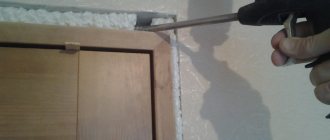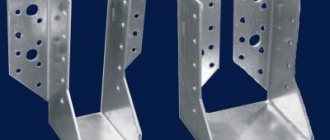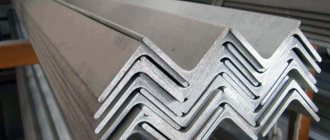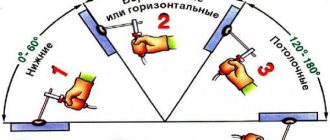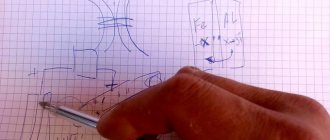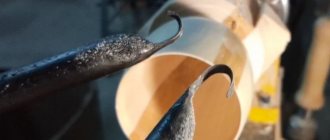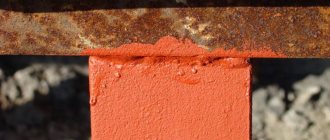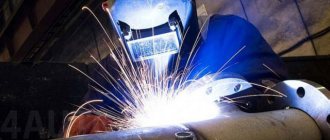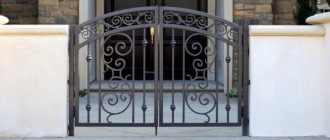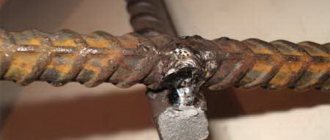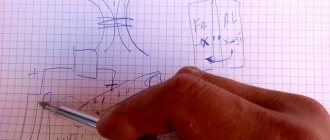To use various wood compounds in the field of construction, you cannot do without just tools, but also without the appropriate experience. That is why inexperienced craftsmen do not always make such connections accurately. One of the best options is for professionals to use various types of fasteners for the array, which are made of metal.
Many surviving architectural monuments made of wood were built without nails, using only an ax. This fact causes true pleasure to this day. However, centuries later, the fasteners made of metal, used to build solid wood buildings, have changed radically, and it is for this reason that today it makes no sense to repeat the experience of our ancestors.
It is preferable to build quickly and without difficulties. Let's talk in more detail about the fasteners offered by manufacturers, taking as an example details that make it possible to simplify as much as possible the connection of beams with floor joists or solid wall surfaces.
Perforated fasteners
When beams, as well as floor surface logs, are hidden in the interior space, they can be connected using beam shoes. This fastener for wood structures is suitable for fastening solid wood not just to wood, but also to concrete and brickwork. It is created from durable steel.
Manufacturers advise fastening such fasteners to the parts being connected with special screws, and in case of excessive load, or fixing to a stone material, use the holes for the necessary bolts. In addition to anchor shoes, today you can purchase special clamps, corners and much more.
Perforated connections
This type of connection is used for fixing wooden and concrete parts. Most often they are hidden deep in the cavity of the structure being built. They are made from durable hardened steel. The thickness of each element ranges from 1.6 to 2.5 mm.
In specialized departments there are products made of low-carbon steel. As a rule, such models have a fairly high cost. They are considered stronger and more resilient.
They are mainly used when laying ceilings and floors. Such hidden fasteners for wood can be used in the construction of houses made of timber.
Tenon and groove
This galvanized wood fastener consists of a tongue and groove section that fit together to provide better transfer of horizontal as well as vertical forces.
The connection can be visible or hidden; for these purposes, the steel parts are recessed into special grooves in advance.
Rules of operation and care
To maintain fasteners in working condition, they need to be inspected and repaired periodically. Usually the beams and straps are changed. Elements fail due to excessive wear - this is immediately noticeable upon inspection.
After skiing, it is necessary to clean the mechanism from snow so that it does not melt and water does not get inside.
Using the information received about snowboard clamps, you can choose the ideal option for yourself at the right price.
Did you manage to solve your problem using the recommendations from the article?
Yes!
51.52%
27.27%
21.21%
Voted: 33
Three-dimensional slats
The modern Italian company produces fastening elements that are placed perpendicularly and vertically at an angle, using T-type slats created by extrusion from a high-strength steel alloy. They are produced in several modifications designed for different levels of loads.
The fastening system must be selected according to the size range of sections of the combined beams and the dynamic as well as static loads acting on them.
During the installation process, the slatted base is attached to the beam using self-tapping screws. Then a groove of the same size as the slatted shelf is created on the end part, attached to the base of the joist beam. If there is no perforation, the shelf is equipped with a log and the connection is secured using self-tapping screws.
Methods for fixing floorboards
The floor covering experiences quite serious loads, so it is necessary to approach the choice of fastening method with all responsibility. If some floorboards are not secured well enough, then after some time they will begin to loosen.
As a rule, this happens after a short period of time. The floorboards move, the initially flat floor begins to make an unpleasant creaking sound, and often it simply collapses.
There are several most common ways to attach floorboards:
- secret method, that is, the use of screws or nails;
- using glue;
- fastening with clamps.
Next, we will look at how to fasten floorboards using each method.
Hidden details Hedgehog
These connectors are steel washers, the base of which is equipped with holes drilled under the slope. These holes are for self-tapping screws. In the center of the washer there is a threaded hole into which a pin is inserted. Its free end is threaded into a special hole and secured on the back side of the beam with a piece with an enclosed washer.
The created connection functions perfectly not only in pull-out, but also in shear. If there is excessive load in the area of the end part of the joist, it is possible to install several elements at the same time.
Execution options
Classification according to this criterion is carried out according to the appearance of the outer part of the hardware, which remains visible after its installation. Here, wood anchor bolts are divided into 4 groups:
- Anchor bolt. A classic hex head fastener designed for virtually any application. This can be used to hang a kitchen set or securely fix one or another element.
- Stud anchor. The most popular application is splicing or extending timber building materials. For example, a mauerlat or other element from the roofing or ceiling system of a country house. It is inserted into a previously drilled hole, after which it is tightened with a wrench or wrench.
- Anchor hook. The device is not used to splice or connect two elements. Due to the hook on the outside, it is used as a suspension. The most popular example of purpose is hanging a SIP cable on the facade of a building. Garden lanterns, chandeliers, and hanging shelves are also fixed in this way.
- Ring anchor. Performs functions similar to the above. The difference is that a closed circle (ring) does not allow an object suspended on it to jump off during any movement in space. An example is a swinging children's swing. There are also anchors with spring or threaded carabiners.
Fasteners with complex threads
Unusual self-tapping screws, which make it possible to save time and money, since this option does not require metal parts. Self-tapping screws are equipped with threads, which help create a high degree of resistance when pulled out, and are also tightly screwed into an array, which completely changes their traditional functioning.
In this case, the work of the screws occurs exclusively by pulling out, which gives them the opportunity to absorb most of the forces that fall on the connection. So, you can fasten elements at an angle, combine parts, minimizing their deflection, as in the photo of wood fasteners below.
Main types of furniture fittings
When choosing furniture, it is important to pay attention not only to its appearance, because parameters such as durability and functionality will be more important. The fittings that are equipped with each product are responsible for these characteristics. There is a wide variety of details that simplify use and increase the service life of furniture.
For normal functioning, furniture is equipped with a variety of fittings
Door handles
There are three main types of pens, these are:
- stationary;
- with a push mechanism;
- rotary.
Stationary models are found exclusively on cabinet doors and bedside tables. They are not equipped with a lock; they allow you to pull or push the door and often have a decorative function. The remaining types are distinguished by the presence of a latch or lock, so they are much more common.
It is impossible to imagine a single door without handles
Wheels
Today on the furniture market you can find a lot of models of furniture on wheels. They are necessary for the free movement of the product around the house. Each type of wheel is different:
- adjustment parameters;
- fastening;
- rotation method.
When choosing such accessories, it is important to pay attention not only to quality and attractive appearance. It is necessary that the wheels match the style of the furniture (on which they will be attached) and the room as a whole.
Wheels for furniture come in different sizes
All types of wheels can be divided into two main subtypes.
- Swivel - allow you to move furniture around the house without much effort.
- Fixed - able to withstand heavy loads, but do not have good maneuverability, so furniture is much more difficult to move.
Legs
Almost all types of furniture must be equipped with legs/supports. Since they support the entire structure, the legs must be of high quality, but we must not forget about their design. This type of fittings can be divided into 3 groups.
- Regular, without height adjustment. They often represent an inexpensive support for furniture. They feature a laconic design.
- Models with the ability to adjust height. These legs are ideal for rooms with uneven floors, allowing you to level the furniture.
- Decorative - used as decoration. Models can be varied, for example, with threads, non-standard shapes.
Legs are usually present on the base of the cabinet, as well as chairs, tables.
Metal models are usually made from:
- chromium;
- aluminum
They are durable and strong. Such legs harmoniously combine with various interior items.
Wood is often used to create decorative models. It is better to choose legs made of expensive wood, since they differ:
- attractive appearance;
- high quality.
Plastic models do not differ in aesthetic appearance, however, they compensate for this:
- wide range of sizes;
- functionality.
An example of what adjustable legs look like
Loops
Furniture hinges refer to connecting fittings that allow doors to be opened/closed. There are different types of hinges, they depend on the configuration of the cabinets and their facades. Such fittings can be equipped with closers for silent and smooth operation.
Hinges are a mandatory part on the cabinet that ensures the functioning of its door.
Table 7. Main types of loops.
| View | Description |
| Invoices | The most common hinges that allow doors to open 110 degrees. Used on swinging facades. |
| Semi-overhead | Such canopies are used to equip cabinets, the doors of which are fixed on one side and swing open in different directions. They allow the door to open 110 degrees. |
| Domestic | Such hinges are used to equip facades that are located between two side parts. They provide door opening 100 degrees. |
| Corner | Ideal for a corner drawer. The door can only be opened 90 degrees. |
| Adit | They are attached to overhead strips located at the same level as the furniture facade. The doors can only be opened 90 degrees. |
| Complex | Used for corner boxes with L-shaped frames. The hinges are attached in the middle of the two facades, ensuring their synchronous opening. |
| Transformer | They are used in conjunction with complex canopies. The hinge is capable of holding two facades on itself at the same time and allows you to open the doors at a large angle. These hinges are also appropriate if the cabinet is equipped with a drawer. |
Furniture hinges with a closer are expensive fittings with a complex design. Thanks to the shock absorber built into the hinges, the doors will close independently. Would you like to get acquainted with the varieties of this fittings in detail? Then read our specially prepared article.
Locks
The purpose of this fitting is to allow the door to be fixed in one position. There are three types of locks:
- latch;
- lock with key;
- lock for the bathroom.
The latches have simple functionality - to operate them you just need to slam the door. Often, doors with a push handle are equipped with such a mechanism.
Locks look appropriate on furniture made of any material
Key locks allow doors to be locked to prevent unauthorized access. Models for the bathroom are a mechanism with a turntable that can be closed from the inside. This option is more appropriate for ordinary doors than for furniture.
Mortise locks will also be relevant for furniture. They have a high reliability index, and most importantly, do not spoil the appearance of the furniture. There are such locks:
- cruciform;
- cylinder;
- suvaldnymi.
Lever locks work on the principle of moving metal plates into grooves.
The simplest is considered to be a furniture lock. They can be mounted on furniture made of chipboard and glass. They are even suitable for double doors.
Hooks
This type of fittings must withstand heavy loads, so when choosing hooks it is important to pay attention to the quality of the metal from which they are made. The hooks are different:
- shape;
- style;
- sizes;
- functionality;
- design.
Among the most popular hooks are one, two and three-arm models. They can be attached independently to any furniture. The purpose of this accessory is to store various things, mainly clothes.
An example of what the main types of furniture hooks look like
Special purpose self-tapping screws
Using similar elements, fairly massive wooden products are attached. The cap has milled ribs and is easily recessed into the product, while the tip is created like a drill. In the middle of the screw, the cutter makes a larger hole, helping to tighten the element as tightly as possible.
An adjustable self-tapping screw will be useful for fastening door frames, window openings, and solid wood sheathing to wood and metal. The self-tapping screw is screwed directly into the box, as well as the wall surface located behind it, or the power part.
The self-tapping screw acts as a weather vane for high-quality fastening of solid wood cladding to a base made of steel. It has a tip in the form of a drill and wings placed above it to expand the hole in the tree.
When drilling metal products, the wings break. As a result, having made a thread in a metal part, the self-tapping screw fits tightly to it, while the solid element is attracted by its head to the metal.
Types of fastening hardware
Depending on the type of furniture and its purpose, the designs of fastening elements differ. They can:
- fix the product from the inside, creating a strong frame;
- secure the furniture base to the floor or wall.
Each type of fittings has different characteristics and features. Some fasteners will be appropriate for assembling glass furniture, others for chipboard.
Main types of furniture fasteners
Furniture corners
One of the simplest and oldest types of fasteners. Even a novice furniture assembler can handle such a corner. Based on it, you can design and assemble almost any structure. The main advantage is that installation can be carried out with a minimal set of tools, without any specific skills.
Table 1. Main types of furniture corners.
| Material | Description |
| Plastic | Installation is carried out using self-tapping screws. These corners are different:
|
| Metal | They are a part with stiffening ribs. Made in the form of a 90 degree angle. To fix them, you can use screws, couplings from:
|
Often, corners are used to fix all cabinet parts together. This is also a common fitting used to equip cabinet kitchen furniture. The main disadvantage of such fasteners is that they need to be tightened regularly, as they will gradually become loose.
Confirmat
The second name of confirmat is Euroscrews, Euroscrews. This is a fairly easy to install screw that does not require precision. Its installation requires the use of:
- drills;
- screwdriver.
This is the most common type of screws for furniture.
The confirmat cap is equipped with a connector for a hex key, which is used to tighten the screw. To install it, you need to make two holes in the furniture - the first in the end of the part, the second in the element that needs to be attached. This screw is quite easy to install, so you can drill holes for it immediately before assembling the structure.
Confirmation structure and standard sizes
For installation of the confirmat, a special drill is used. However, according to most craftsmen, such a device is not relevant - it is difficult to work with it, since it regularly:
- gets clogged;
- staggers.
Therefore, to obtain the necessary holes, you can use ordinary drills. The most common is the confirmat size of 7 * 50 millimeters.
Table 2. Advantages and disadvantages of confirmat.
| pros | Minuses |
| 1. Installation does not require special equipment, so assembling the furniture is quite simple. 2. Provides reliable fastening of parts. 3. Withstands heavy loads. 4. Installation is possible using a mallet. | 1. If you do not use plugs that match the color of the furniture, the confirmation hat will be visible. 2. Confirmat cuts threads inside the part, which can cause its deformation. 3. If furniture is assembled using confirmat, it cannot be disassembled more than three times. |
After studying the table, you can see that the confirmat does not cause any difficulties when working with it and provides a reliable screed. However, if possible, it is better to replace it with an eccentric coupler.
With frequent twisting/twisting, the confirmat damages furniture parts, which negatively affects the strength of the entire structure
Dowels
Dowels are wooden cylindrical fasteners, their size is usually 8 * 35 millimeters (length and diameter). The main advantage of these fasteners is that they are invisible from the inside and outside.
Concealed fastening fittings for furniture
Also, dowel fastening has a couple of disadvantages.
- You can only do it once. It is quite difficult to dismantle and reassemble furniture without damaging it.
- Jeweler's precision is required when preparing holes. To comply with this condition, the use of special equipment may be required.
What does a box jig look like?
Instruction No. 1 - how to install a dowel
Installation of this fittings is extremely simple, you just need to follow certain rules.
Step No. 1 – holes for fasteners. Holes must be made in each part using a drill. It is important that they completely coincide with the position of the axis.
The holes for the dowels must be coaxial
Step No. 2 – installation. Dowels must be inserted into the prepared holes on one part. They should only go halfway deep. To increase strength and secure the fasteners, you can add PVA glue to the holes.
Example of how dowels should be inserted
Step No. 3 – furniture assembly. Now you need to secure the second piece of furniture. To do this, you just need to place it on the protruding edge of the dowels.
If everything is done correctly, the dowels will tightly secure the furniture parts
Instruction No. 2 - how to make a jig for dowels yourself
You don’t have to buy a conductor in a store, because it’s quite easy to make it yourself using available materials. It is necessary to take into account that separate templates are required for different diameters of dowels. To create a conductor you will need:
- wooden blank;
- plywood;
- metal tubes;
- drill/screwdriver.
Supplies for a homemade template
Step #1 – holes. Through holes should be made in the wooden blocks, it is important that they are located strictly at an angle of 90 degrees. The diameter of the drill must correspond to the dimensions of the metal pipes.
What wooden blanks with holes should look like
Step No. 2 – processing of plywood. You need to cut three rectangular pieces from plywood and make holes in them. The edges of the plywood can be sanded with sandpaper to remove chips.
The width of the plywood sheets must correspond to the size of the bars
Step No. 3 – forming the conductor. It's time to put the whole structure together. To do this, you need to apply epoxy glue to the metal tubes and insert them into the prepared holes in the wooden blocks. When the glue has dried, you can begin fixing the plywood sheets. They can be attached to the beams using PVA.
When the glue on the homemade jig is completely dry, the template will be suitable for use.
Video – Conductor for DIY dowels
Ties
To fasten furniture parts, 2 types of ties are used. They differ from each other in certain features.
Table 3. Types of furniture ties.
| View | Description |
| Eccentric | Such fittings are used exclusively under factory assembly conditions. To install the screed, a special device is required to make an accurate hole. The main advantage of this screed is its invisibility, making the furniture look:
|
| Intersectional | It is presented in the form of a screw with a nut, which allows you to tighten two perpendicular pieces of furniture together. This type of tie is ideal for fixing:
|
Shelf supports
This type of fittings is very diverse. It is usually divided into fasteners for glass and chipboard. Shelves that harmoniously combine two different types of materials look interesting. To obtain a high-quality screed between them, it is necessary to use shelf holders. Such fittings happen:
- with fixation;
- without fixation.
It is better to choose shelf supports only from high-quality material
Table 4. Differences between shelf supports for chipboard and glass.
| Options | For glass | For chipboard |
| Design | Contains screw and rod. | It consists of a self-tapping screw and a holder. |
| Installation | They are fixed to the cabinet walls with screws, and a shelf is placed on the base. | The self-tapping screw needs to be screwed into the wall of the cabinet, and the holder will fix the plane of the shelf. |
| Advantages | It has an attractive appearance and provides reliable fixation of the shelf. | The reliability of the design is ensured by the threads in the cabinet material. |
| Flaws | To protect against loosening and damage, an elastic gasket is required. | Precise holes must be made. It is important that they match on the wall and shelf. |
Shelf holders must match the style of the furniture and be in harmony with other interior items
Bolt nut
For quite a long period of time, a system such as a bolt-nut has been used to connect furniture surfaces. Holes are made in each part for such fasteners. A bolt is inserted into it on one side, and a nut is screwed on the other. Today, such fastening hardware is not used so often, despite its advantages. The bolt head has a semicircular shape, which, after fixation, does not rotate, remaining in a static position.
The bolt nut has lost its relevance with the advent of modern fittings
Despite its ease of operation, the bolt-nut system has shifted to the background after the advent of more modern types of fastening hardware. However, it still remains relevant when assembling furniture, especially for novice craftsmen.
Table 5. Advantages and disadvantages of bolt-nut fasteners.
| pros | Minuses |
Among the advantages of the bolt nut are:
| There are only two disadvantages. 1. Visibility - after installation, such fasteners remain visible. Because of this shortcoming, the bolt-nut has lost its relevance today. 2. The ability to connect exclusively parallel surfaces. |
Video - Main types of furniture connections
Photos of wooden fasteners
How much do wood screws cost - review of prices per 1 kg
The price for wood screws is indicated by suppliers both per piece and per kilogram. But if you need to purchase, for example, 2000 pieces of such fasteners, no one will count them. Either they will sell it in original, unopened packaging, or they will calculate it by weight. In any case, let's consider the cost according to several parameters.
| Type of self-tapping screw | Price per piece (as of June 2022), rub. | Price per kg (as of June 2022), rub. |
| Phosphated | from 1.8 | from 180 |
| Black oxidized | from 1.9 | from 195 |
| Galvanized | from 2 | from 200 |
| Yellow-passivated | from 2.1 | from 210 |
| With press washer | from 1 | from 8 |
| Galvanized capercaillie | from 4 | from 500 |
| Roofing | from 1.23 | from 220 |
| Confirmations | from 1.38 | from 150 |
As you can see, the price of such fasteners is not so high compared to the benefits and convenience that they bring when used. Moreover, even a beginner can work with them. All you have to do is choose the right one and you can get down to business!
Watch this video on YouTube
Previous Building materialsStrong flooring for every home: laminate or linoleum - which is better Next Building materialsWhat the walls of new buildings hide: modern technologies for constructing buildings made of porous brick
Frame joints
We divide the frame connections according to their location in the frame into corner and central.
Corner joints are created by connecting the ends of friezes around the perimeter. The ends of the friezes can be joined together:
- At right angles;
- On the pin;
- On the pin and groove;
- By overlap.
Central joints are used when connecting partitions to peripheral friezes of the frame or when connecting partitions to each other.
The most common are recessed pins, pins, and center slabs (for large pieces of timber structures).
Manufacturing of sliding supports
In most cases, these parts are operated at high humidity and often come into contact with water and condensate penetrating under the roof slope. When manufacturing sliding supports, it is necessary to take into account the strong impact of these and other negative environmental factors. For this reason, they are pre-coated with a layer of molten zinc, additionally alloyed with other substances to reduce susceptibility to corrosion and improve strength characteristics, thereby increasing the overall load-bearing capacity of the structure.
The sliding supports themselves are manufactured by cold stamping on the basis of a fairly strong and ductile material - low-carbon steel grade 08 PS. The percentage of carbon in it is 0.08%, which makes it possible to stamp the material with high quality. Balancing the strength characteristics of the element is carried out by deoxidation.
